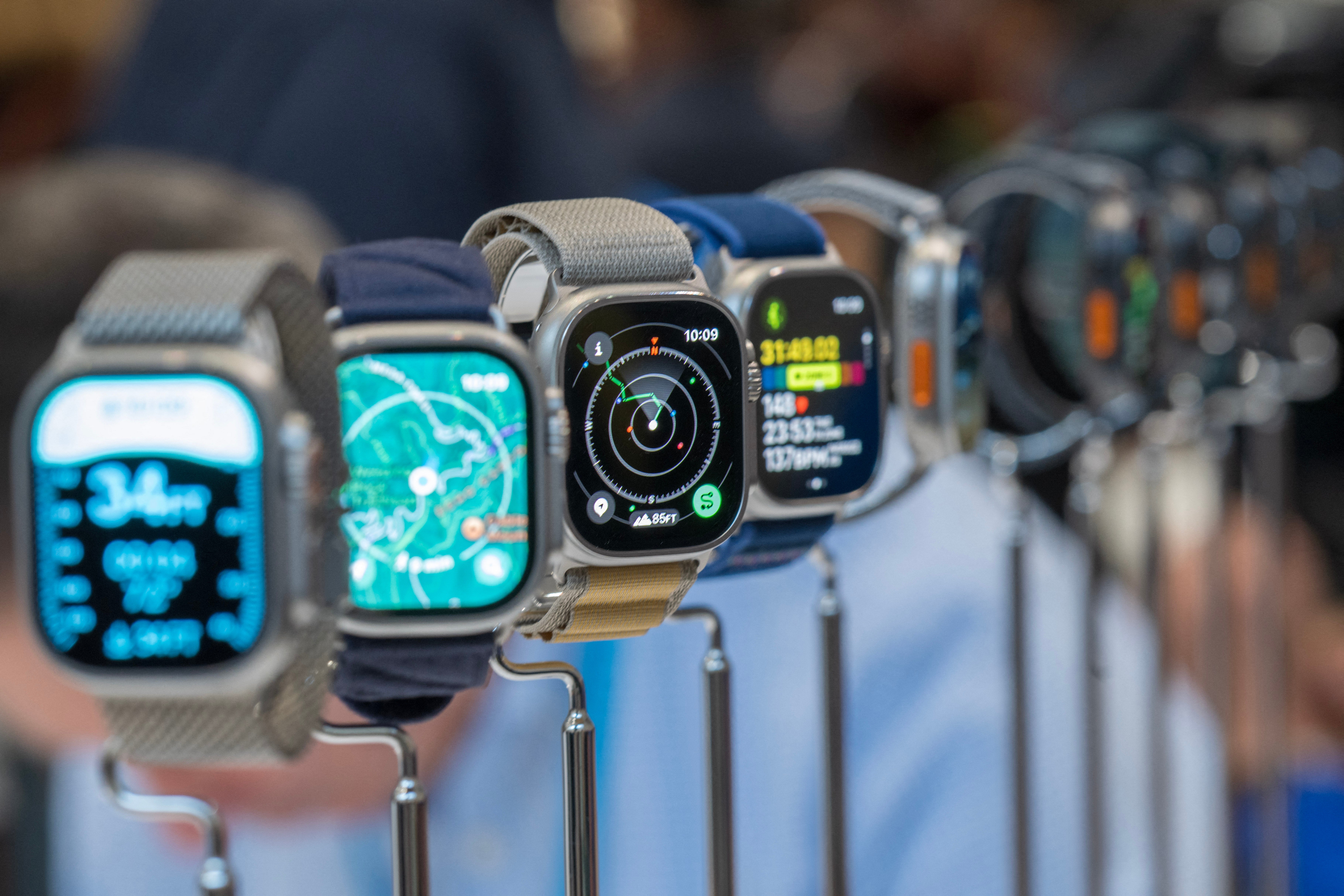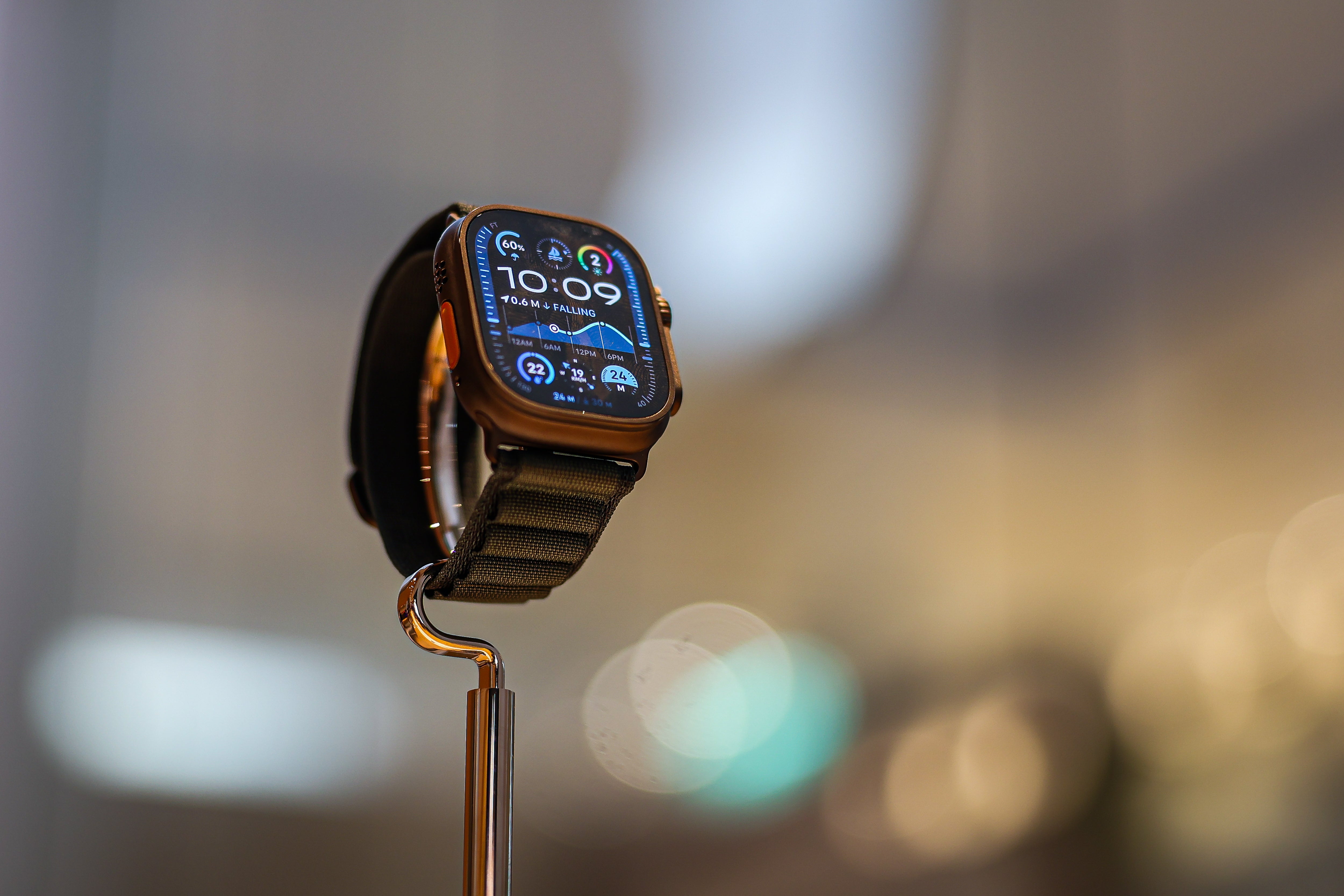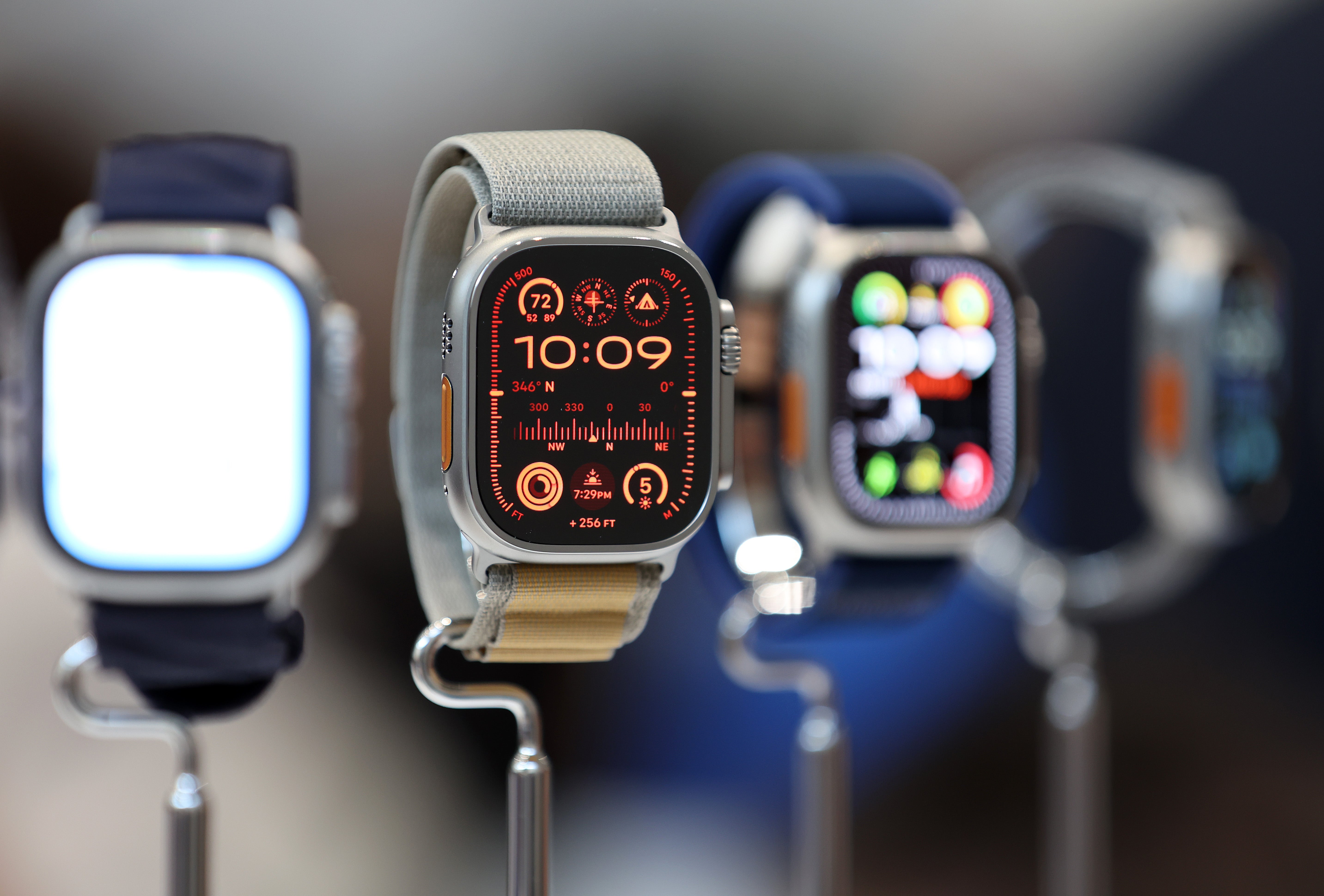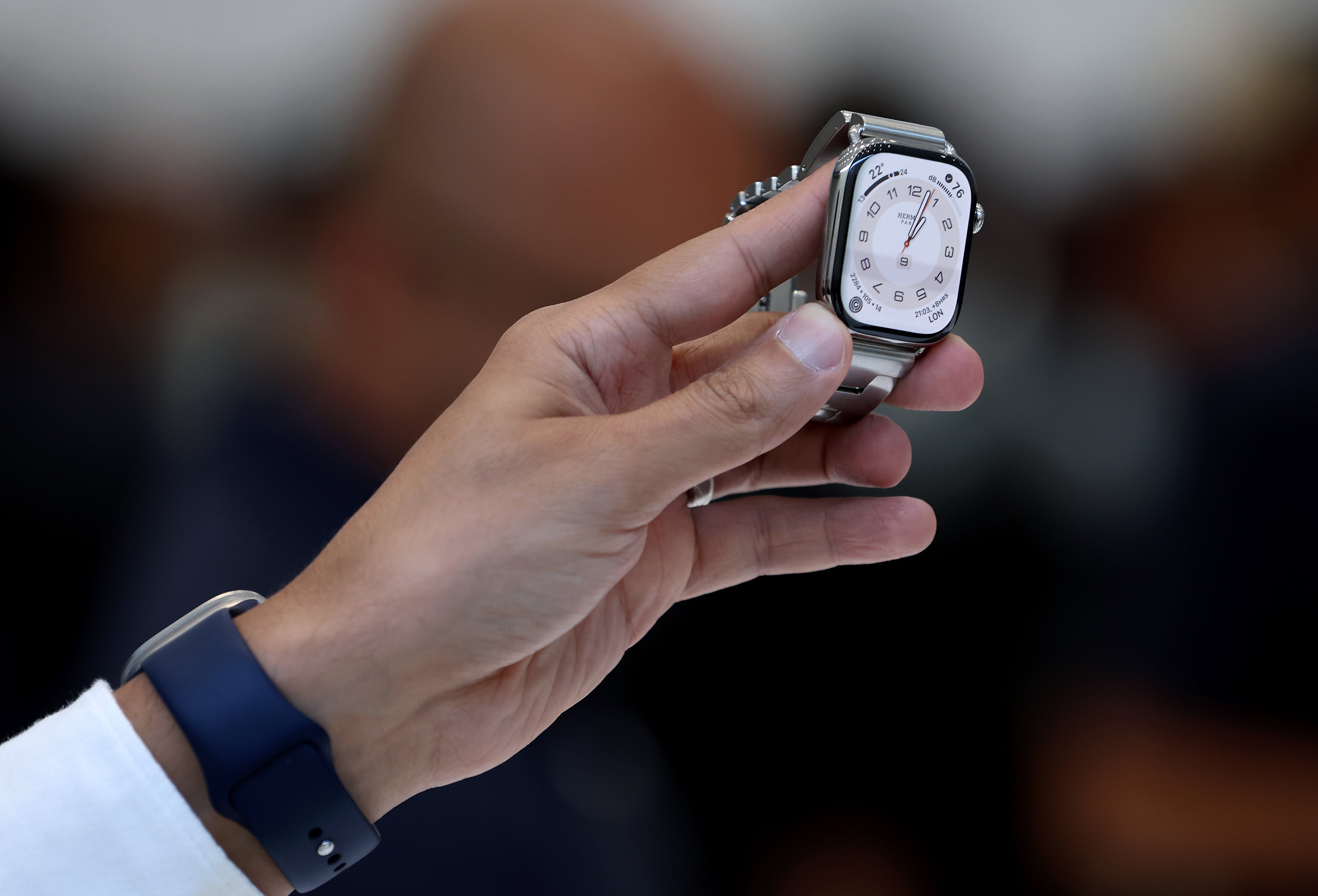Apple executives on 10 years of the Apple Watch – and where it goes from here
Apple’s COO tells David Phelan about his own medical situation as the company reveals its plans to measure even more of our lives


Ten years ago, in September 2014, after the iPhone 6 had been revealed Apple’s CEO Tim Cook announced “one more thing”. It was the first Apple Watch. It launched in Spring 2015 and back then, it wasn’t as focused on health and fitness as it is now, offering an all-things-to-all-people approach with notifications, a galaxy of apps and outstanding timekeeping.
Although other elements are still numerous, in recent years the Watch has become the home for a range of health and fitness elements. I sat down with Jeff Williams, Apple’s Chief Operations Officer, who has been intensely involved in the Watch since before it was launched; Sumbul Desai, vice president of health; and Jay Blahnik, vice president of fitness technologies.
The first Watch had a heart rate monitor built in. It was mostly there to better inform how many calories you were burning as you exercised. That sensor has since become key in multiple health and fitness metrics. The Watch’s health features have evolved over the last decade and now include heart rate notifications, fall detection, irregular heart rate detection, cycle tracking, a Mindfulness app, blood oxygen tracking, warnings when you’re in a high-noise environment, VO2 Max measurements and the capability to take an ECG on your wrist.

I ask Jeff Williams about the decision to bring a greater focus on health and fitness, how it came about and what that eureka moment felt like. Williams is the consummate executive: thoughtful but direct, relaxed but laser-focused. He says, “After we launched the first Watch, we were focused initially on activity, and so we thought it could have an impact on health. Then we started getting letters from customers and they came in two forms. One, was, hey, you’ve helped me be more active. I’ve lost weight, I’ve improved my stamina – and we all know that’s really helpful for long-term health.
“The other letters began with one which said, ‘Apple Watch helped save my life.’ It said ‘I noticed my heart rate was really high while I was sitting down,’ and it led them to checking their heart rate again and then seeing their doctor. They found out they had severe heart blockage and needed surgery immediately. When I first got the letter, I thought is that real? Because it’s easy to check your pulse, but then we got another one of those letters and another.”
At which point, Apple started looking closely. “We realised we had the potential to have an impact. We said, if a limited number of people are randomly checking their watch, imagine the impact we could have if we did that for everybody in the background. We put in this simple algorithm that meant we’d only notify users if they were sitting still, not running up a flight of stairs and we started getting more letters.
“So, we realised, wow, we have this opportunity – and even more, a responsibility. So, we began to look for opportunities. That’s when we started pulling on threads and adding additional sensors and features like irregular rhythm, atrial fibrillation alerts and all the way through to something like sleep apnoea.”
Sleep apnoea alerts are the latest addition to the arsenal of health and fitness features on the Watch and are exclusive to this year’s Apple Watch Series 9, last year’s Series 9 and the Apple Watch Ultra 2.
Adding health features to the Watch has been going on non-stop since that first thread was pulled. And while the hardware isn’t a medical device – after all, you can use it to check the weather and read your latest notifications as readily as you can measure your heartbeat – the software is designed to be as exact as on a medical instrument.

Sumbul Desai has the right balance of trustworthy authority and warm kindness – the perfect medical bedside manner. Dr Desai has been involved in the health features of Apple Watch since 2017 and takes the precision of the software seriously. “It’s a consumer device, but I feel we need to hold our accuracy, our evidence base, our scientific rigour to a higher level. When you are a patient interacting with a medical device in a traditional medical setting, you have a physician navigating you through that. In our world, it’s the consumer interacting directly with this feature. Our goal is to take a complex topic and simplify it. We believe it needs to be incredibly accurate and easy to understand.”
Jay Blahnik has a background as a fitness instructor, which perhaps contributes to his fizzing, infectious energy. For him, the health and fitness development of the Apple Watch came naturally. “We start first with asking can it be helpful? Can we make an impact? And we follow these great ideas wherever they lead,” he says.
I ask Williams how important it is for Apple to continue to exploit the sensors which are in the Watch to address further features. The latest example is the sleep apnoea notifications which use the accelerometer in the Watch to new effect.
In a moment of candour, Williams says, “I have sleep apnoea and when I discovered it, it was a complete game-changer. I didn’t know what was wrong with me. I would wake up in the morning exhausted. I went through all kinds of tests. I finally did a sleep test and they said, you have sleep apnoea. And then I got a CPAP machine, and it was like a new lease of life.”
Apple says that 80 per cent of people with sleep apnoea don’t know they have it and the hope is that by wearing the Apple Watch at night, many undiagnosed cases will be spotted. I ask Williams if his story pushed Apple to look into sleep apnoea. “It was less about pushing any personal agendas – we don’t really do that at Apple – but it certainly helps to have experience in terms of being able to reinforce and encourage the team that there’s such an opportunity to help people. Everybody in the team is just really inspired by this mission of trying to help people with their health.”
Desai adds, “I am a big believer in being proactive and focusing on prevention. And in health care and in medicine, particularly in the States, though I think the UK does a better job of it, getting upstream before problems become a clinical issue is important and prevention is key to that. So, the device that you wear all the time for all the other things like you’re running a marathon or measuring your steps, if that can also give you a sign of something happening early in your health, that’s really powerful.”

Apple takes measurements from your wrist when you’re sleeping, saved in the new Vitals app. But then Desai drops a hint: “If we could push, over time, to get that type of information during the day, well, we always pull on the thread to see what else we can do. But the biggest reason why we enable the Vitals app overnight is we felt it would lead to the cleanest, most understandable experience.”
And this kind of monitoring is different from when the Apple Watch was launched. As Blahnik explains, “It’s easy to forget, but 10 years ago, you didn’t really know how far you were running unless you happened to have measured the distance in your car, say. GPS on the wrist was not a common thing. How measuring your activity adds up to something over your life and your longevity is a big deal. And that tracking really didn’t exist 10 years ago.”
Checking health details can have a knock-on effect, too. Blahnik says, “I think what we love is that measurement can be motivation, and if done in the right way, people are more mindful about how to make small changes that add up to something big.”
Over the last 10 years of Apple Watch, what stands out for Williams most? “If I zoom out, it’s the health emails I get from customers. Sometimes they write to me, but mostly they write to Tim [Cook, Apple’s chief executive] and Tim gets up early in the morning and so he forwards them. No matter what else is going on in the day, when I open these emails from customers, I just get incredible joy: there’s so much excitement and optimism and the potential to impact people’s health.”
Join our commenting forum
Join thought-provoking conversations, follow other Independent readers and see their replies
Comments
Bookmark popover
Removed from bookmarks